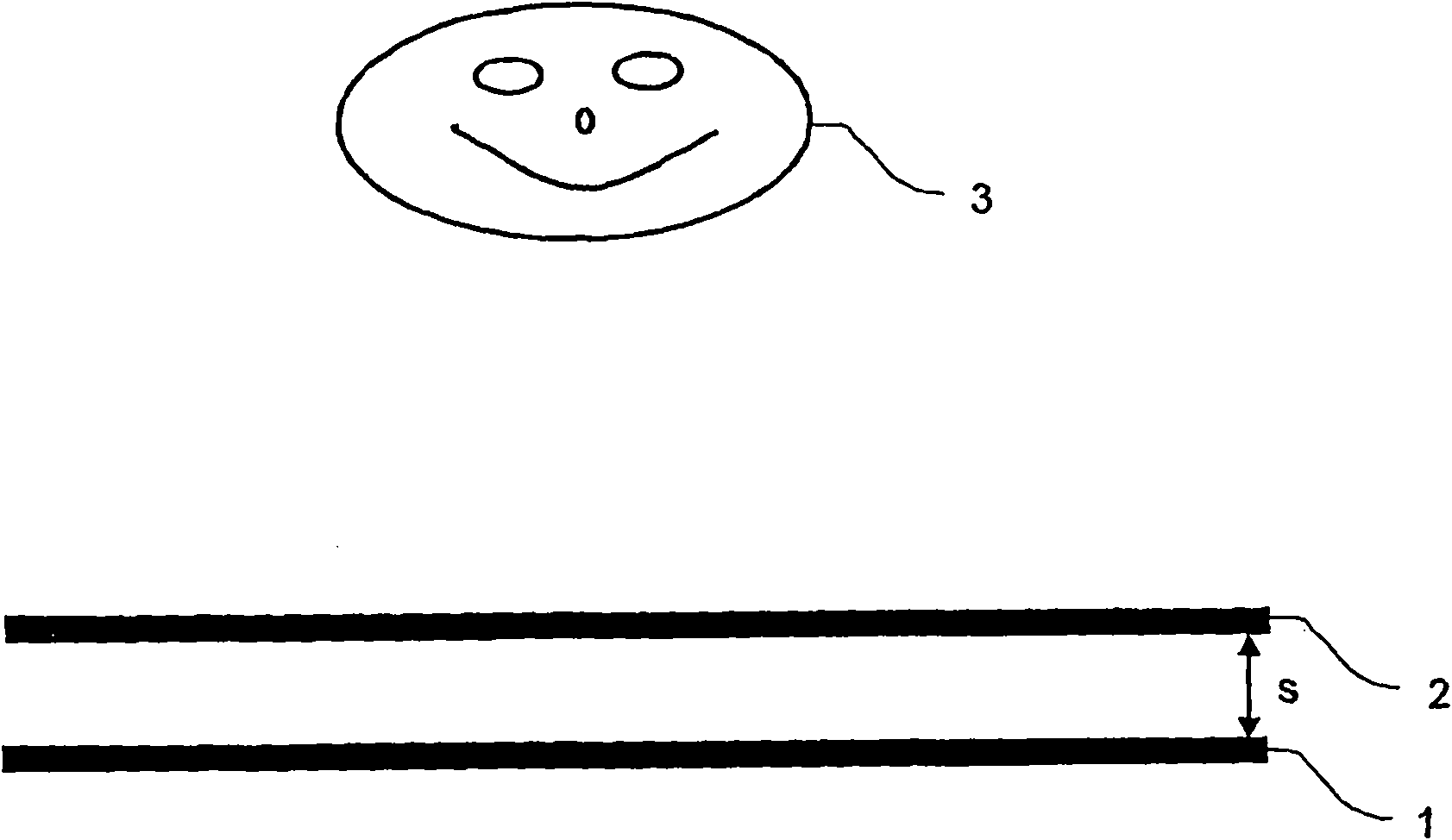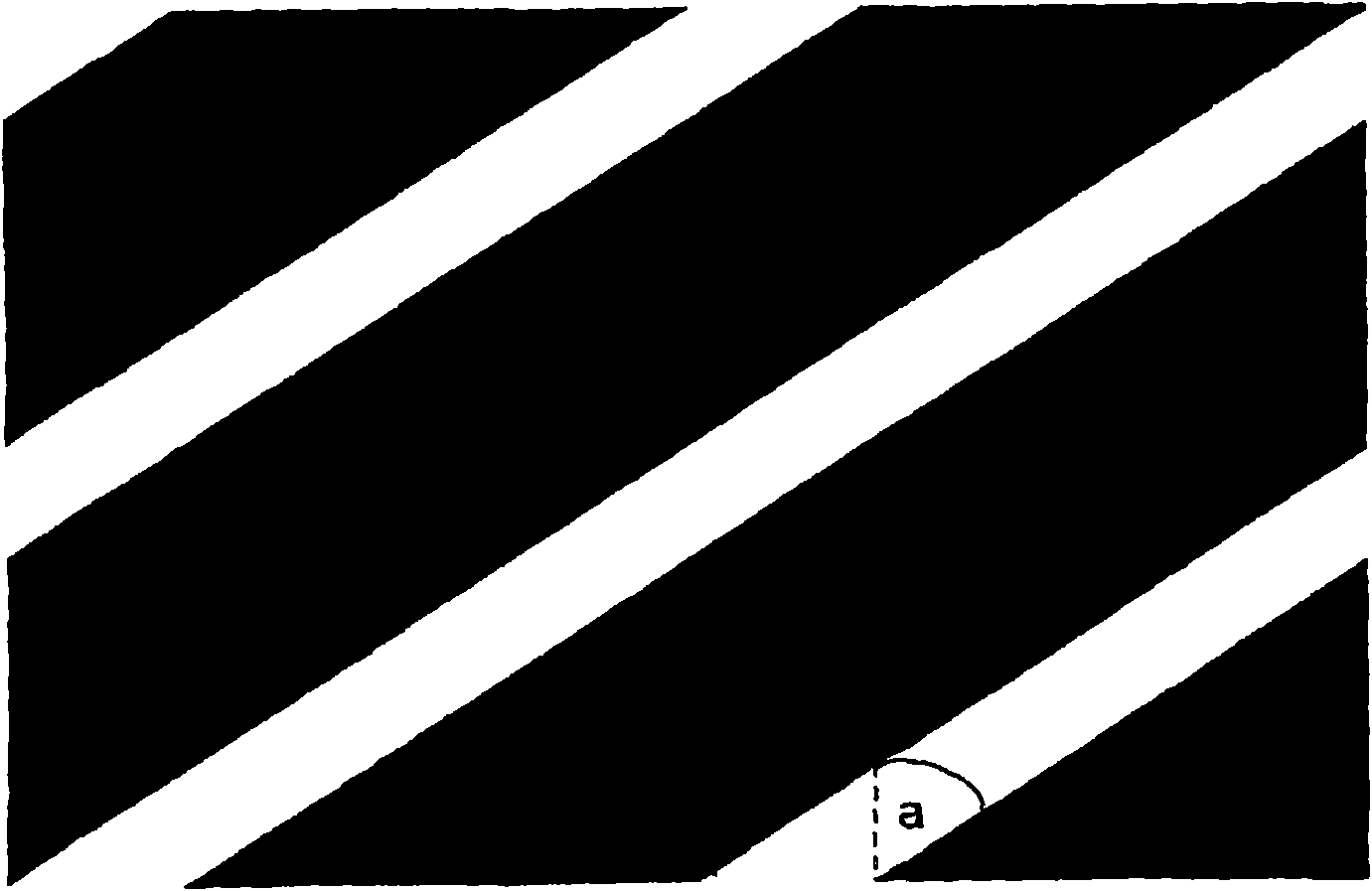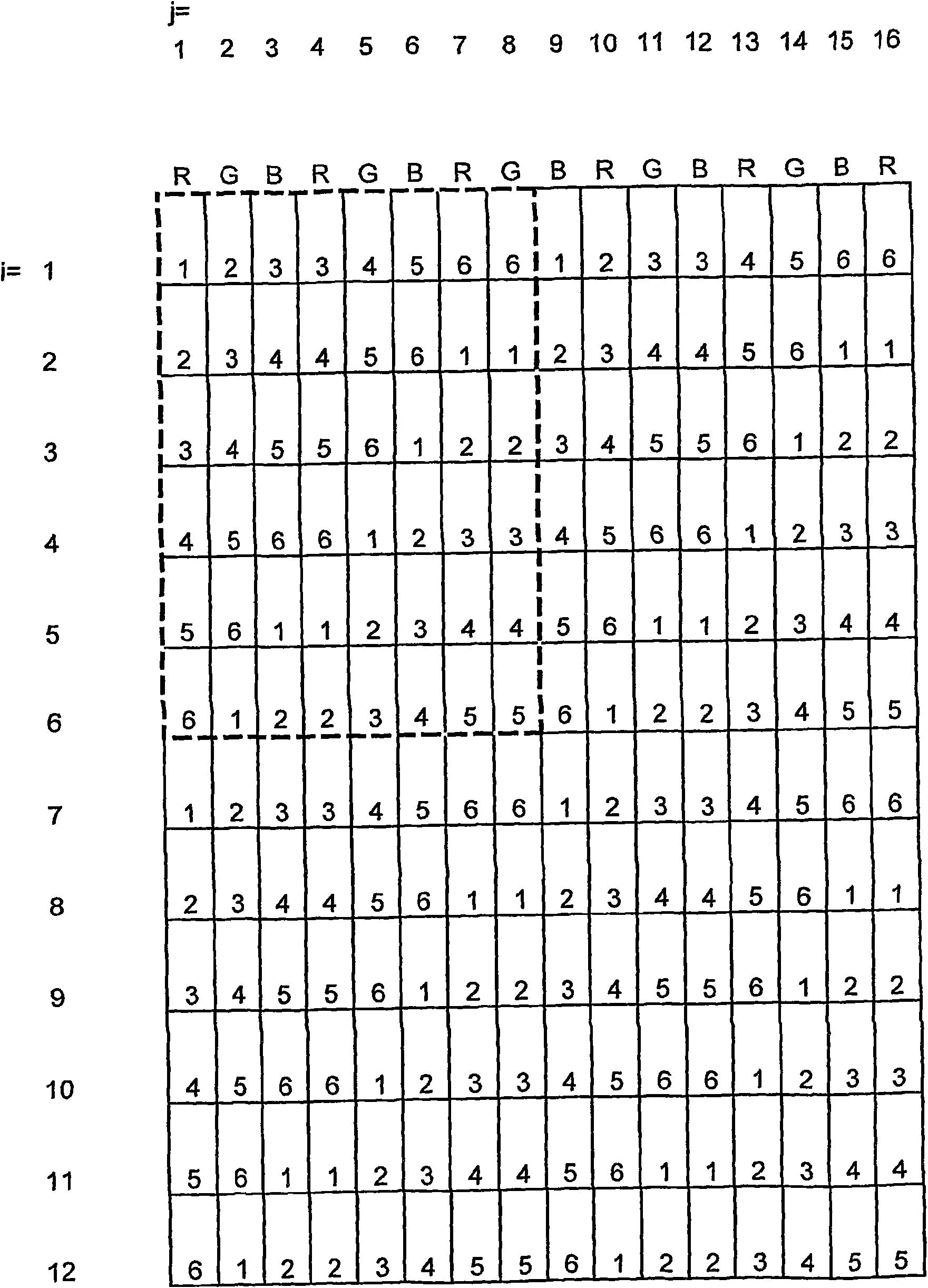Method and arrangement for three-dimensional representation
A reproduction device, a technology in the horizontal direction, applied in image communication, electrical components, stereo systems, etc., can solve the problems of limited depth perception, unpleasantness, drop, etc., achieve good resolution, and avoid the effect of moire effect
- Summary
- Abstract
- Description
- Claims
- Application Information
AI Technical Summary
Problems solved by technology
Method used
Image
Examples
Embodiment Construction
[0051] first, figure 1 A schematic structure for carrying out the method according to the invention is shown. It includes a grid 1 composed of pixels x(i,j) on which different viewpoints A(k)—where k=1,...,n and n=6 or n=7— The image part information of - is visible, which also includes a parallax barrier screen 2 arranged at a distance s in front of the grid 1 of pixels x(i,j) in the viewing direction of the observer 3 . Of course, there can also be several observers 3 who obtain a spatial impression according to the method according to the invention.
[0052] also, figure 2 A cross-sectional view of a parallax barrier screen 2 used in the method according to the invention is shown. The parallax barrier screen 2 comprises alternating opaque and transparent parts, wherein the transparent parts correspond according to the invention to stripes that are constrained to substantially straight lines, which are projected in parallel on the parallax barrier screen 2 to the pixels ...
PUM
 Login to View More
Login to View More Abstract
Description
Claims
Application Information
 Login to View More
Login to View More - R&D
- Intellectual Property
- Life Sciences
- Materials
- Tech Scout
- Unparalleled Data Quality
- Higher Quality Content
- 60% Fewer Hallucinations
Browse by: Latest US Patents, China's latest patents, Technical Efficacy Thesaurus, Application Domain, Technology Topic, Popular Technical Reports.
© 2025 PatSnap. All rights reserved.Legal|Privacy policy|Modern Slavery Act Transparency Statement|Sitemap|About US| Contact US: help@patsnap.com



